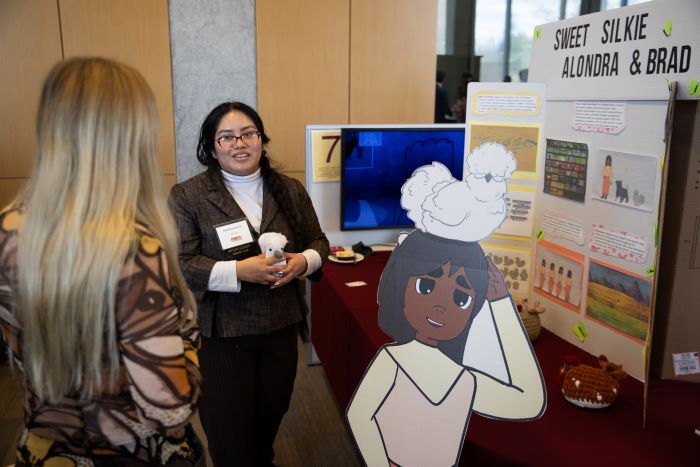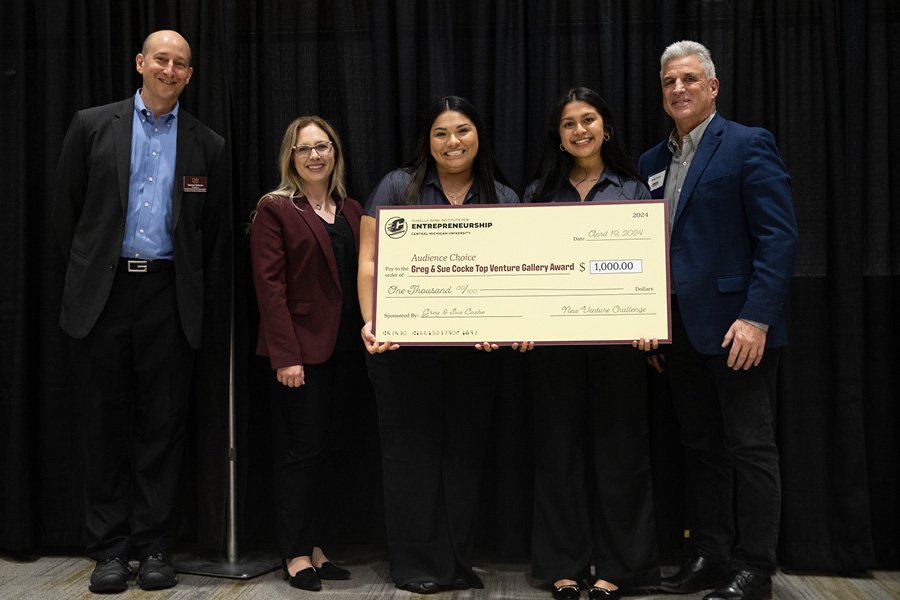
Start up
Passion. Potential. Pitches. Don't miss any of the 2025 New Venture Challenge excitement.
Tune in Friday, April 11 at 1 p.m. for great ideas and fierce competition. Then, join the judges, mentors, spectators and teams as they see who is going home with thousands of dollars in venture financing. The awards broadcast begins at 6:30 p.m. and one team will walk away as the overall best venture.
Central Michigan University’s College of Business Administration is the home of the Isabella Bank Institute for Entrepreneurship and the first Department of Entrepreneurship in the state of Michigan. We are a student-centric hub where experiential, curricular, and external entrepreneurial opportunities intersect.
Our mission is to maximize student success by fostering a campus-wide entrepreneurial mindset that promotes inter-disciplinary collaboration and the creation of new ventures.
We aim to create innovative programming, boost cross-campus and ecosystem collaboration and provide a comprehensive mentoring program.
Our institute provides extracurricular opportunities and is open to all undergraduate and graduate CMU students.
Are you interested in becoming an entrepreneur?
Every journey is unique. Explore the opportunities that interest you.
Central Michigan University faculty members will use a federal grant to work with local communities developing plans to prepare for climate change-driven floods.
One of the first parts is using the powerful computing potential of the United States Department of Energy to build a new tool: precipitation models that could help local planners know how to protect critical pieces of their communities.
Wendy Robertson, Daria Kluver, John Allen and Rod Lammers, all from the College of Science and Engineering, received $1 million from the U.S. Department of Energy to work with community leaders in three Michigan watersheds.
Those watersheds are the Detroit-area Rouge River watershed, the Lower Grand River watershed near Grand Rapids and Isabella County’s Chippewa River watershed.
They also represent different kinds of land use, from urban Detroit to mostly rural Isabella County. That will create unique challenges depending on local priorities, offering CMU’s team a unique opportunity to collaborate with local leaders.
CMU’s researchers plan to solicit input to help identify vital community assets potentially at flood risk. Those assets could be anything from a field of high-value crops to roads necessary for First Responders, said Robertson, a hydrology expert with the Department of Earth and Atmospheric Sciences.
At the same time, they’ll run models to determine what future precipitation patterns could look like for a range of carbon emissions scenarios, said Kluver, a climate scientist with the earth and atmospheric sciences department.
Lammers, an environmental engineer with the School of Engineering and Technology, plans to take those precipitation models and determine where the water will go.
They’ll use that data to craft scenarios for local leaders to help them make plans based on changing risks, Robertson said.
The county-level climate change models are unique in a couple of ways and could help solve an open question among scientists.
They are among the first regional climate models to include a realistic representation of how the Great Lakes influence Michigan’s weather patterns Robertson said.
Current models don’t go deeper than the state level. The new models can include real-world weather processes like wind patterns or lake-effect precipitation. It’s more in-depth information, but also more resource intensive.
The question is whether this kind of model will produce results accurate enough to justify the added expense.

Explore special opportunities to learn new skills and travel the world.

Present your venture and win BIG at the New Venture Challenge.

Boost your entrepreneurial skills through our workshops, mentor meetups and pitch competitions.

Learn about the entrepreneurship makerspace on campus in Grawn Hall.

Present a 2-minute pitch at the Make-A-Pitch Competition and you could win prizes and bragging rights!

Connect with mentors and faculty who are here to support the next generation of CMU entrepreneurs.

Are you a CMU alum looking to support CMU student entrepreneurs? Learn how you can support or donate to the Entrepreneurship Institute.